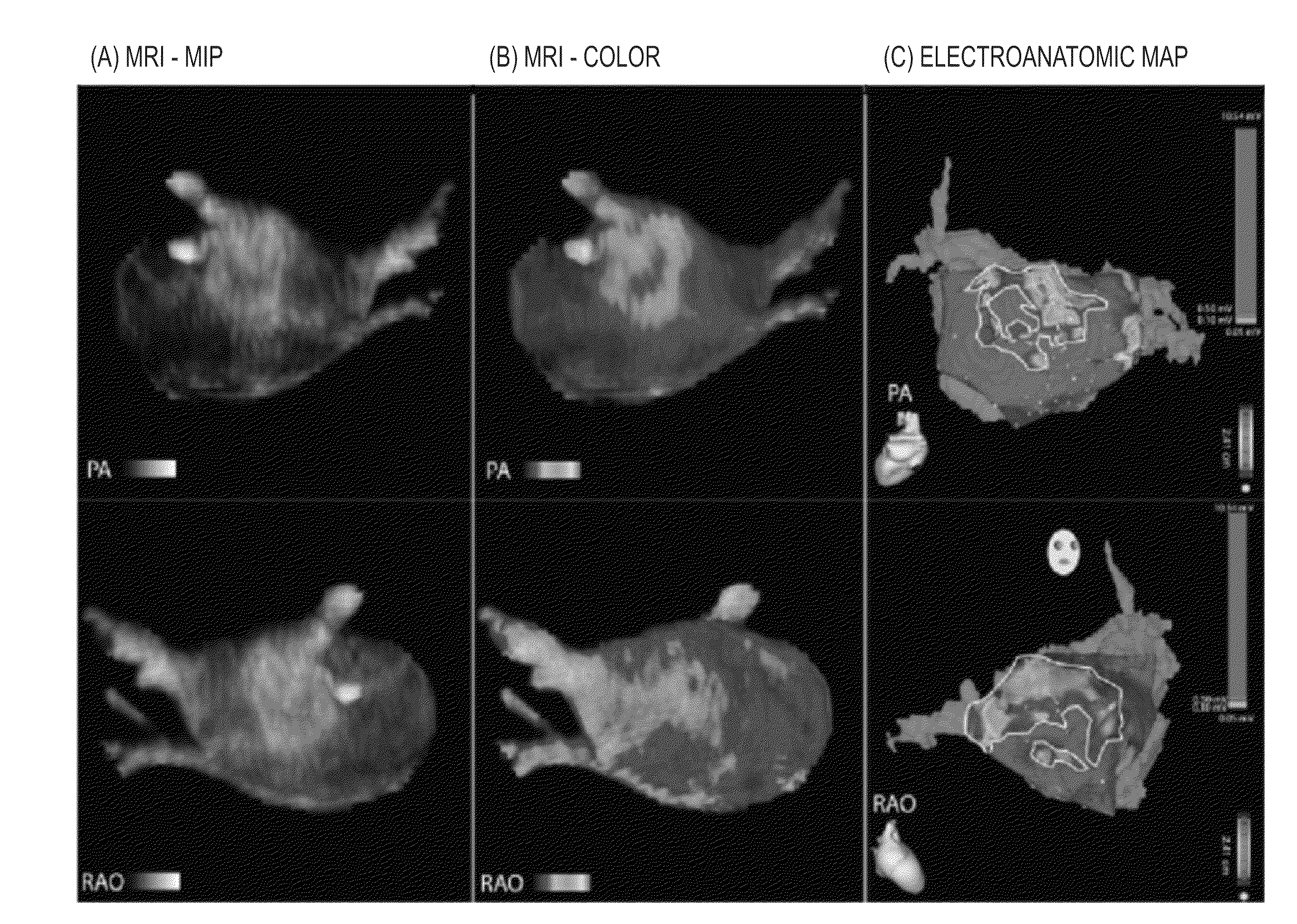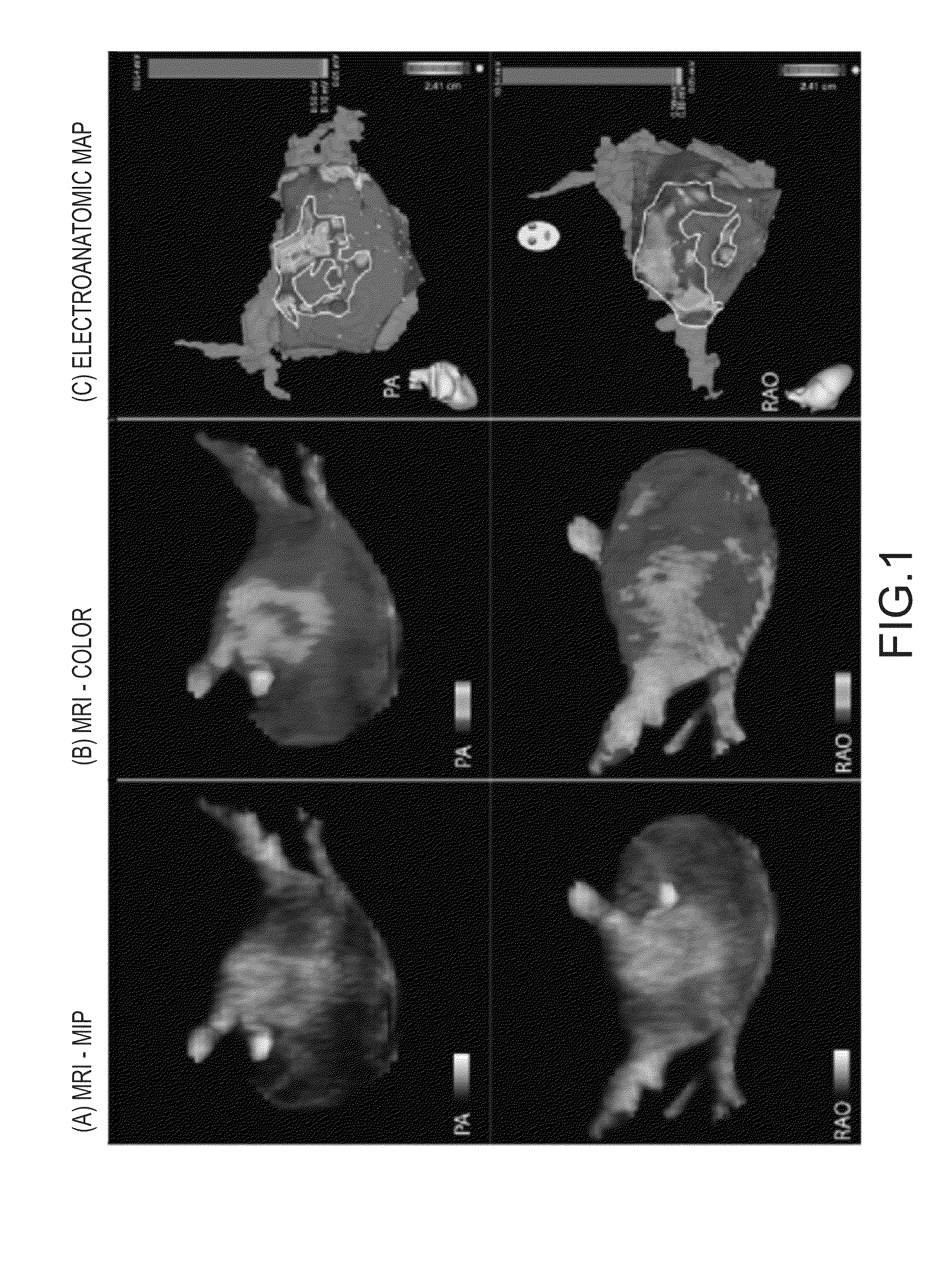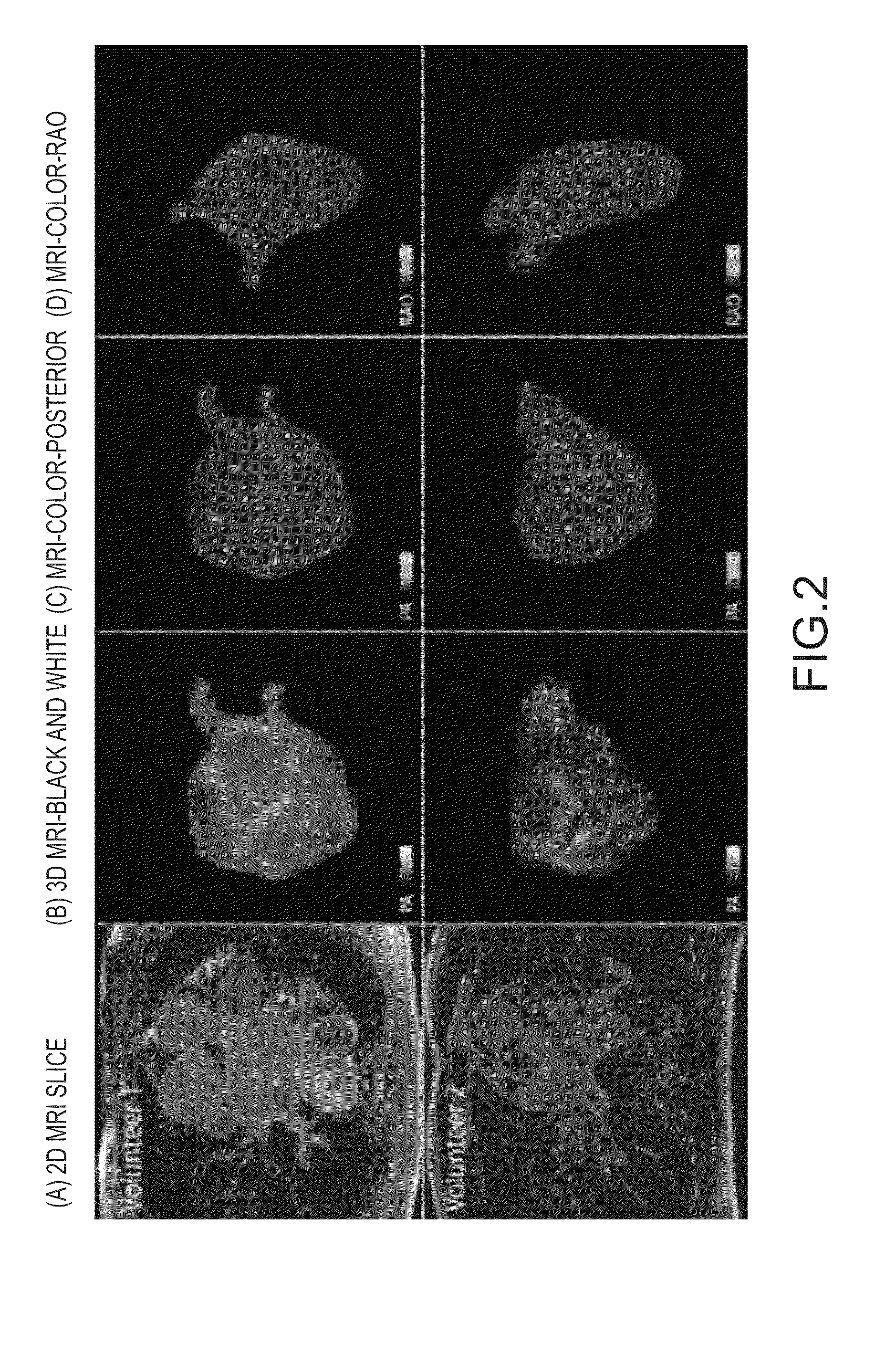Therapeutic outcome assessment for atrial fibrillation
a technology of atrial fibrillation and outcome assessment, which is applied in the field of imaging of cardiac tissues and atrial fibrillation treatments, can solve the problems of irregular ventricular rhythm and premature p wav
- Summary
- Abstract
- Description
- Claims
- Application Information
AI Technical Summary
Benefits of technology
Problems solved by technology
Method used
Image
Examples
example 1
[0089]Atrial Fibrillation Patients
[0090]DE-MRI scans were performed on 81 patients referred to the University of Utah for ablative PVAI AF treatment. Table 1 lists demographics of the study patients.
[0091]Prior to ablative PVAI AF treatment, the 81 patients underwent MRI scanning to determine pulmonary vein anatomy, LA area, and LA wall thickness. LA appendage thrombus was ruled out via transesophageal echocardiogram (TEE). Left ventricular ejection fraction was obtained by biplane transthoracic echocardiogram. LA volume was determined by segmentation of blood volume on MRI angiography images.
[0092]Baseline AF type was categorized as either paroxysmal AF, which comprises an episode of AF that self terminated within seven days, or persistent AF, which comprises an episode of AF lasting longer than seven days. Patients that required either pharmacological treatment or medical or electrical cardioversion to end their AF were considered to have persistent AF. Data regarding patient resp...
example 2
[0123]Delayed Enhancement MRI Acquisition
[0124]Patients referred to the University of Utah for PVAI were included in this analysis. In all patients, a contrast enhanced 3D FLASH angiography sequence and a cine true-FISP sequence were used to define the anatomy of the LA and the pulmonary veins. To image healthy and unhealthy LA tissues, delayed enhancement MRI was acquired approximately 15 minutes after contrast agent injection using a 3D inversion recovery prepared, respiration navigated, ECG gated, gradient echo pulse sequence. Typical acquisition parameters included: free-breathing using a respiratory navigator with a 6 mm acceptance window, a transverse imaging volume with voxel size=1.25×1.25×2.5 mm (which was then reconstructed to 0.625×0.625×1.25 for analysis), TR / TE=6.3 / 2.3 ms, TI=230-270 ms, flip angle=22°, bandwidth=220 Hz / pixel, 1 RR interval between inversion pulses, phase encoding in right-left direction, parallel imaging using the GRAPPA technique with R=2 and 32 refer...
example 3
[0143]Patients
[0144]After informed consent was obtained from 53 patients, each underwent, prior to receiving ablative PVAI AF treatment, MRI scanning to determine pulmonary vein location, esophagus location, LA anatomy, and health of LA wall tissues. MRI scanning of all patients was repeated 3 months after the ablative PVAI AF treatment to determine the outcome of the treatment. Following treatment, the patients continued warfarin anticoagulation therapy to maintain an international normalized ratio of 2.0 to 3.0 for a minimum of 3 months. Positive treatment outcome was defined as lack of AF recurrence while off antiarrhythmic medications. Negative treatment outcome was defined as AF recurrence, and AF recurrence was defined as a detected symptomatic or asymptomatic AF Episode lasting >15 seconds.
[0145]AF event monitors were in place for a minimum of two months following ablative PVAI AF treatment, and patients were instructed to activate the monitors any time they felt AF symptomat...
PUM
 Login to view more
Login to view more Abstract
Description
Claims
Application Information
 Login to view more
Login to view more - R&D Engineer
- R&D Manager
- IP Professional
- Industry Leading Data Capabilities
- Powerful AI technology
- Patent DNA Extraction
Browse by: Latest US Patents, China's latest patents, Technical Efficacy Thesaurus, Application Domain, Technology Topic.
© 2024 PatSnap. All rights reserved.Legal|Privacy policy|Modern Slavery Act Transparency Statement|Sitemap



